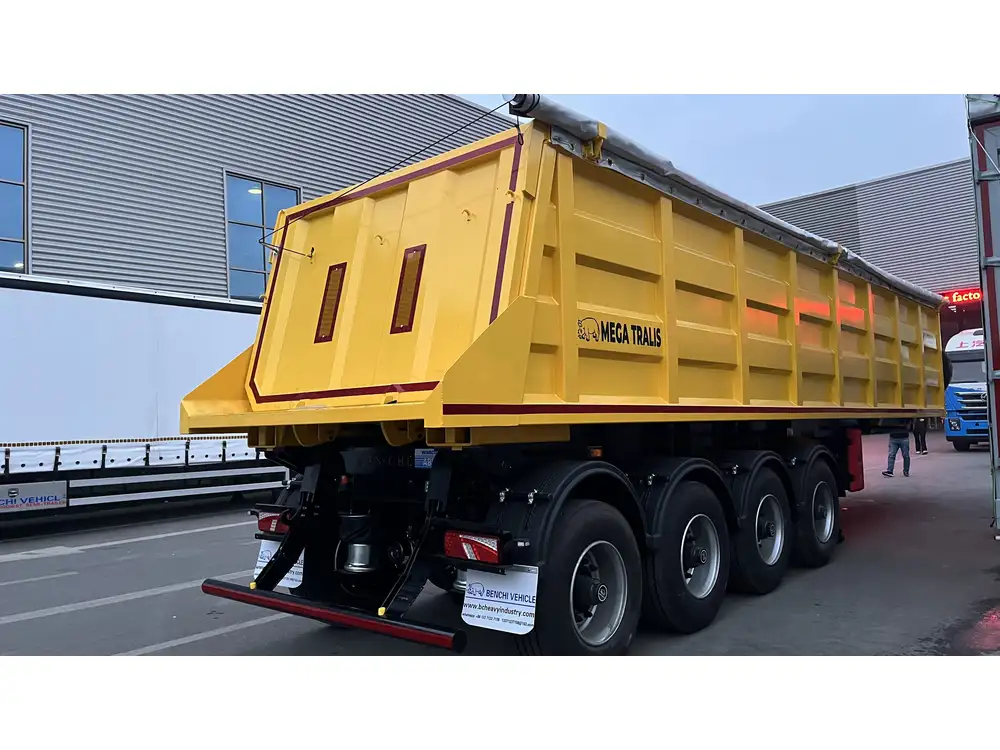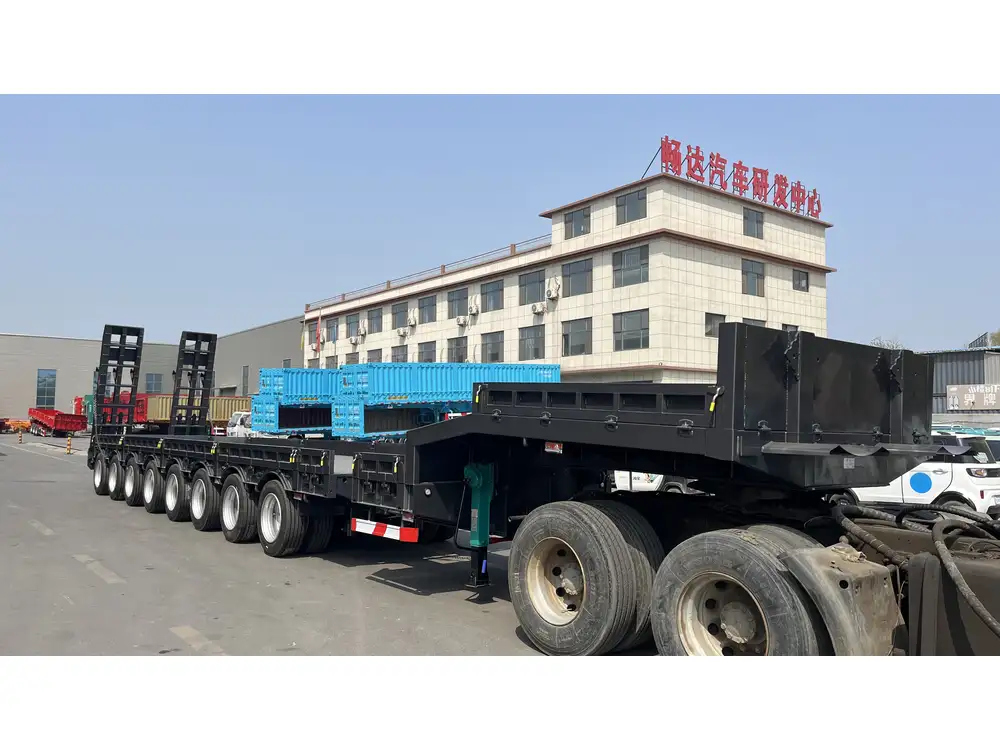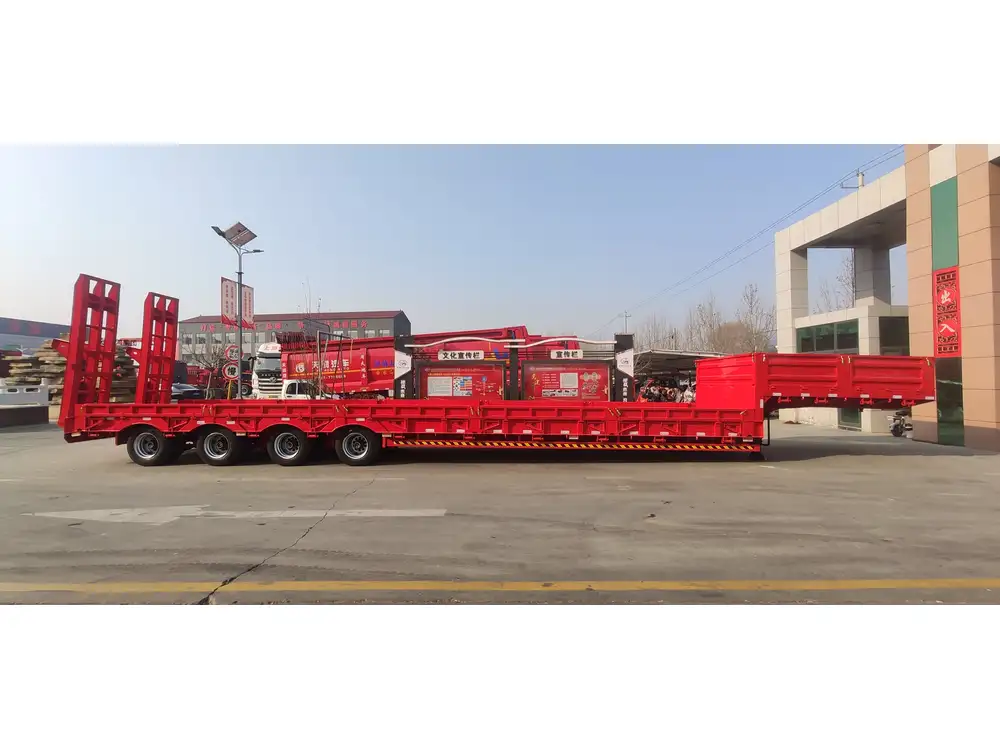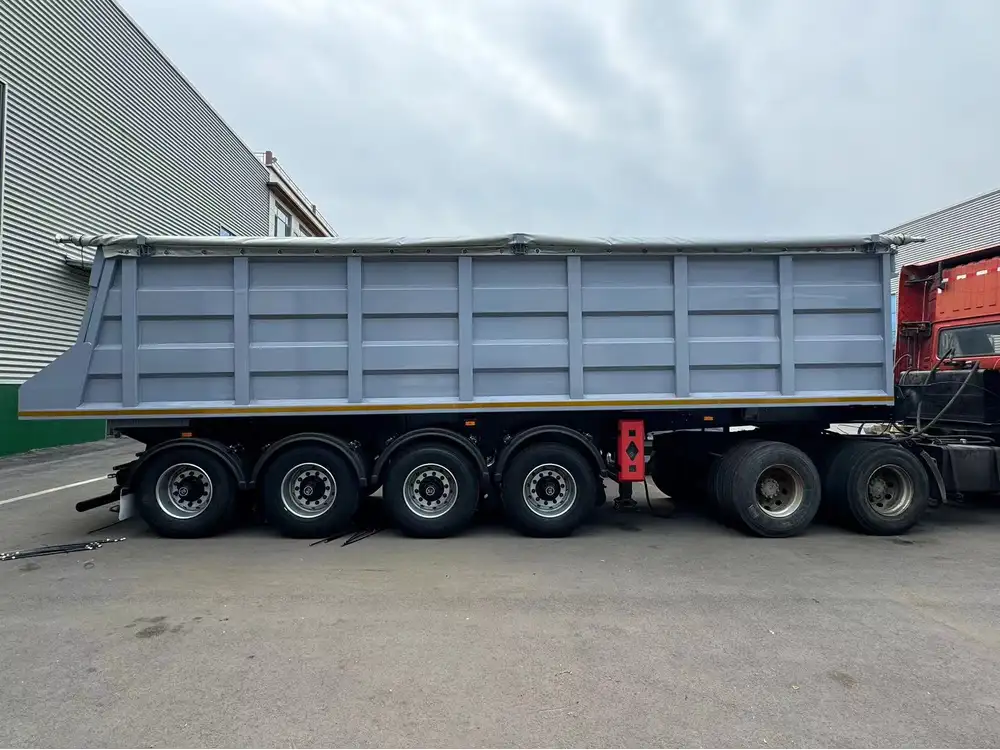When it comes to transporting goods across long distances, semi-trailers are the backbone of the freight industry. With their colossal size and robust design, knowing the weight limits is crucial not just for legal compliance, but also for ensuring safety on the road. In this article, we will delve into the intricacies of weight limits for semi-trailers, discussing various types, regulations, and practical implications for manufacturers and operators alike.
The Basics of Semi-Trailer Weight Limits
What is a Semi-Trailer?
A semi-trailer is a trailer that is designed to be towed by a truck or tractor. It is called “semi” because it relies on the vehicle it’s attached to for support at the front end, typically resting on a hitch. Semi-trailers are always a crucial component in the overall structure of a tractor-trailer combination.

Key Weight Measurements
Understanding semi-trailer weight limits involves familiarizing oneself with several key measurements:
- Gross Vehicle Weight (GVW): This is the total weight of the vehicle, including its own weight and the weight of the cargo it carries.
- Gross Combination Weight (GCW): This refers to the total weight of the truck plus the trailer and the cargo it is hauling.
- Payload Capacity: This is the maximum weight of cargo a semi-trailer can carry without exceeding its limits.
Understanding these terms is vital as they directly influence transportation logistics, regulatory compliance, and safety on the roads.
Standard Weight Limits for Semi-Trailers
Federal Guidelines
In the United States, the Federal Motor Carrier Safety Administration (FMCSA) regulates weight limits for commercial vehicles. Here are the general weight limits:
| Category | Weight Limit |
|---|---|
| Single Axle | 20,000 pounds |
| Tandem Axle | 34,000 pounds |
| Tridem Axle | 42,000 pounds |
| Maximum GCWR | 80,000 pounds (total) |
Note that states may have their own regulations that can slightly vary from the federal guidelines. Hence, operators must comply with both federal and state laws.

Bridge Formula
The Bridge Formula, a crucial calculation established by the U.S. Department of Transportation, is used to determine maximum axle weight limits. The formula is as follows:
[ W = \frac{LN}{N – 1} + 12N + 36 ]Where:
- W = maximum weight in pounds imposed on any group of two or more axles
- L = distance in feet between the extreme axles of any group of axles
- N = number of axles in the group
Understanding how this formula functions is essential for operators to avoid penalties or legal issues.
Types of Semi-Trailers and Their Weight Limits
Different types of semi-trailers have varying weight capacities based on their design and construction materials.
Flatbed Trailers
Flatbed trailers are used for transporting a wide array of goods, including oversized loads. These trailers typically carry a maximum weight of 48,000 to 53,000 pounds, depending on state regulations.

Dry Van Trailers
Dry van trailers, enclosed by walls and used primarily for transporting dry goods, usually have a weight limit that ranges between 45,000 to 48,000 pounds.
Refrigerated Trailers (Reefers)
Reefer trailers are designed to transport temperature-sensitive goods. Their load limit generally mirrors that of dry vans, falling within 45,000 to 48,000 pounds.
Specialized Trailers
Specialty trailers, such as those designed for car hauling or heavy-duty equipment hauling, can have significantly higher weight limits. These are typically custom-built to meet the needs of specific industries.

How Loading Practices Affect Weight Limits
Proper Weight Distribution
Weight distribution is critical when loading a semi-trailer. Uneven distribution can lead to increased wear and tear on suspension systems and affect vehicle handling. It is advisable to load heavier items at the front and distribute weight evenly across the trailer axles.
Overloading Consequences
Overloading a semi-trailer can lead to legal repercussions, including hefty fines and penalties. More alarmingly, it may cause accidents due to loss of control or brake failure, compromising the safety of the driver and other road users.

Implications of Exceeding Weight Limits
Safety Risks
Operating beyond the prescribed weight limits puts not only the driver at risk but also other road users. Semi-trailers that are overloaded encounter:
- Increased stopping distances
- Difficulty maneuvering
- Greater risk of tire blowouts
Legal Ramifications
Exceeding weight limits can result in significant penalties. In many jurisdictions, fines can reach up to $600 per violation, coupled with potential points on a driver’s license, which can affect their livelihood.

Semi-Trailer Maintenance to Ensure Compliance
Regular Inspections
Conducting frequent inspections ensures that your semi-trailer remains compliant with weight limitations. Key areas to inspect include:
- Tires: Regularly check for tread wear and proper air pressure.
- Brakes: Ensure braking systems are functioning optimally.
- Suspension: Monitor wear and tear on suspension components to maintain weight distribution.
Load Management Systems
Utilizing electronic load management systems can assist in weighing cargo before departure. These systems can indicate whether the load is within legal limits, thus preventing overload situations.

Innovations Influencing Weight Compliance
Technological advancements are shaping the way we approach load management and compliance. Some innovations include:
- Onboard Weighing Systems: These systems offer real-time weight readings, alerting drivers if they approach weight limits.
- Telematics: This technology provides data analytics that can track load distribution and vehicle performance, helping operators make informed decisions.
Strategies for Efficient Load Planning
Route Planning for Weight Compliance
When planning logistics, route optimization is critical. Considering weight limits on different roads can avoid unnecessary fines.
- Utilize Software: Load planning software incorporates weight limits and can suggest routes that minimize weight violations.
- Know Your Wells: Familiarize yourself with weight limit signs on various roadways your routes may traverse.

Engaging Load Brokers
Engaging with load brokers who are knowledgeable about transportation regulations can enhance operational efficiency. They can provide insights into load limits, helping you locate suitable freight options that align with your semi-trailer’s weight capacity.
Conclusion: Navigating the Weight Limits of Semi-Trailers
Understanding the weight limit on a standard semi-trailer is pivotal for anyone involved in the transportation and logistics industry. From adhering to federal regulations to implementing strategic load management practices, manufacturers and operators must remain vigilant to ensure not only compliance but the safety of their operations.
As the industry continues to evolve, it becomes increasingly vital to stay informed about the various types of semi-trailers, their respective weight limits, and the underlying regulations. By leveraging technology, adhering to safe loading practices, and embracing efficient logistics strategies, stakeholders can navigate the complexities of weight management and enhance operational performance. Understanding these dynamics not only benefits compliance with the law but significantly enhances overall safety, efficiency, and profitability in the transportation sector.



